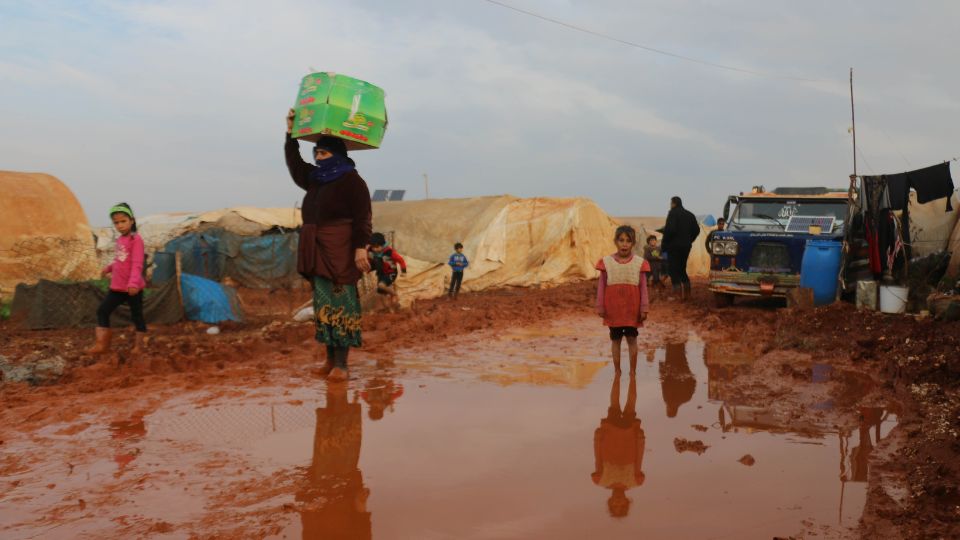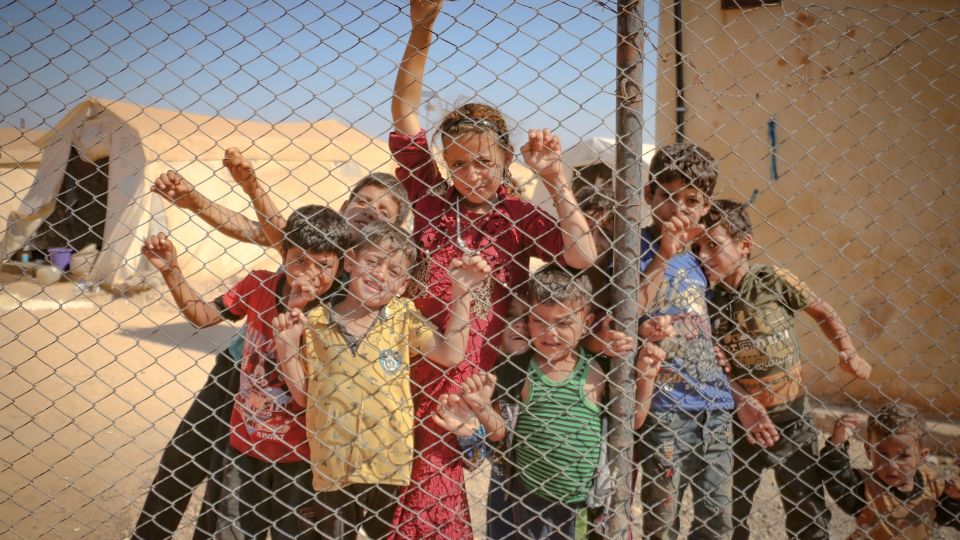Global Humanitarian Crisis: 5 Devastating Trends Demanding Immediate Action
In 2025, the global humanitarian crisis has reached staggering proportions, challenging our collective moral compass and testing the resilience of nations. Millions are displaced due to conflicts, climate change, and economic instability, each contributing to a world where the basic rights of individuals are increasingly threatened. As communities struggle to respond, the complexity of these crises demands innovative solutions and unwavering commitment from governments, organizations, and individuals alike.
Understanding the root causes and current challenges is essential, not only to advocate for those in need but also to promote a more humane global society. In this analysis, we examine the complex nature of the humanitarian crisis, reviewing the responses emerging and the strategies being implemented to address this urgent predicament. Join us as we uncover the realities faced by affected populations and the collaborative efforts underway to bring hope and healing to those most in need.
Key Factors Contributing to the Crisis in
Wars and political instability continue to displace millions of people, creating an ever-growing population of refugees and internally displaced persons. These conflicts are often protracted, with no immediate resolution in sight, leading to long-term humanitarian needs that strain the resources of countries and international organizations like the United Nations High Commissioner for Refugees (UNHCR).
Another significant factor is climate change. Extreme weather events, rising sea levels, and changing weather patterns are displacing communities and devastating livelihoods. Entire regions are becoming uninhabitable due to droughts, floods, and hurricanes, forcing people to flee their homes in search of safety and stability. Climate-induced migration is becoming a daily reality for many, exacerbating the humanitarian crisis and highlighting the urgent need for sustainable environmental policies.
Economic instability also plays a crucial role. High levels of unemployment, inflation, and economic recessions in many countries are pushing people into poverty and making it difficult for them to access basic necessities like food, clean water, and healthcare. The World Bank’s Poverty Overview provides detailed insights into these systemic challenges.
The Worldwide Scope of the Global Humanitarian Crisis
Over 250 million people worldwide require urgent humanitarian assistance. Food insecurity is one of the most pressing issues, with disrupted supply chains and plummeting agricultural production. Organizations like the World Food Programme (WFP) are working tirelessly to address this crisis through emergency food aid and cash transfers.
Healthcare systems in conflict zones have been decimated, leaving populations vulnerable to infectious diseases. The World Health Organization (WHO) emphasizes the need for rebuilding healthcare infrastructure and providing mental health support.

Healthcare is another critical area of need. Many conflict-affected regions have seen their healthcare infrastructure decimated, leaving populations without access to essential medical services. Infectious diseases are rampant in overcrowded refugee camps and displaced communities, and the lack of medical supplies and personnel exacerbates the situation. Mental health support is also crucial, as the trauma of displacement and loss takes a significant toll on affected populations.
The Impact of Climate Change on Humanitarian Needs
Climate change is increasingly recognized as a significant driver of humanitarian crises. The frequency and intensity of natural disasters such as hurricanes, floods, and droughts are rising, causing widespread displacement and destruction. In 2025, we are witnessing entire communities being uprooted as their homes and livelihoods are destroyed by climate-related events.
One of the most immediate impacts of climate change is on food security. Changing weather patterns are disrupting agricultural production, leading to crop failures and livestock losses. In regions that rely heavily on agriculture, this can mean the difference between survival and starvation. The resulting food shortages lead to higher prices and increased competition for resources, often sparking conflict and further displacement.
Water scarcity is another critical issue exacerbated by climate change. As freshwater sources dwindle, communities are forced to compete for this vital resource. This is particularly evident in arid and semi-arid regions, where prolonged droughts are becoming more common. The lack of clean water not only affects drinking water supplies but also sanitation and hygiene, leading to the spread of waterborne diseases and compounding the humanitarian crisis.
The Role of Global Organizations in Humanitarian Responses
Global organizations play a pivotal role in responding to humanitarian crises. Agencies like the United Nations, the International Red Cross, and various non-governmental organizations (NGOs) are at the forefront of providing aid and support to affected populations. Their efforts are critical in coordinating responses, mobilizing resources, and delivering essential services to those in need.
One of the key functions of these organizations is to assess and prioritize needs. By conducting on-the-ground evaluations and monitoring situations as they evolve, they can identify the most urgent requirements and allocate resources accordingly. This ensures that aid reaches those who need it most and that efforts are not duplicated or wasted.
Collaboration and partnerships are essential for effective humanitarian responses. Global organizations often work alongside local governments, community groups, and other stakeholders to implement programs and initiatives. This collaborative approach helps to build local capacity, ensuring that communities are better equipped to handle future crises. Additionally, it fosters a sense of ownership and empowerment among affected populations, which is crucial for long-term recovery and resilience.
Case Study: The Humanitarian Impact of the Myanmar Earthquake
The 2025 Myanmar earthquake destroyed critical infrastructure, delaying aid delivery. The United Nations Office for Disaster Risk Reduction (UNDRR) underscores the importance of disaster preparedness in mitigating such crises. The 7.8 magnitude quake caused widespread destruction, leveling entire towns and leaving thousands of people homeless. The immediate aftermath saw a rush to provide emergency relief, with search and rescue teams working tirelessly to save lives and recover bodies from the rubble.
The earthquake exacerbated an already fragile situation in Myanmar, a country grappling with political instability and ongoing conflict. Displaced populations, already living in precarious conditions, found themselves facing even greater challenges. The destruction of infrastructure, including roads, bridges, and hospitals, made it difficult for aid to reach affected areas. This led to delays in the delivery of essential supplies like food, water, and medical care, further compounding the suffering of survivors.
The international community responded with an outpouring of support. Humanitarian organizations mobilized resources and personnel, setting up temporary shelters and providing emergency medical services. However, the scale of the disaster highlighted the need for long-term recovery efforts. Rebuilding homes, schools, and healthcare facilities became a priority, along with addressing the psychological trauma experienced by survivors. The Myanmar earthquake served as a stark reminder of the devastating impact of natural disasters and the importance of preparedness and resilience in mitigating their effects.
Sudan’s Civil War: A Catalyst for the Global Humanitarian Crisis
The Sudanese Civil War, which has been raging for years, continues to have dire humanitarian consequences in 2025. The conflict, marked by ethnic violence, political power struggles, and resource competition, has displaced millions of people within Sudan and into neighboring countries. The constant state of warfare has left communities in ruins, with countless lives lost and livelihoods destroyed.
One of the most significant humanitarian impacts of the Sudanese Civil War is the displacement crisis. Refugee camps in Sudan and surrounding nations are overflowing with people fleeing the violence. These camps, often lacking adequate resources and infrastructure, are hotbeds for disease and malnutrition. The overcrowded conditions make it difficult to provide proper sanitation, clean water, and healthcare, leading to outbreaks of illnesses like cholera and measles.
Access to education has also been severely disrupted. Many schools have been destroyed or repurposed as shelters, and teachers have fled or been killed in the conflict. This has left a generation of children without access to formal education, threatening their future prospects and the long-term development of the country. UNICEF’s Education in Emergencies programs aim to restore schooling for displaced children.
Key Drivers of Current Humanitarian Crises
Several key drivers are fueling the current humanitarian crises around the world. One of the most prominent is conflict. Wars and political instability continue to displace millions, creating massive humanitarian needs. These conflicts are often driven by deep-seated ethnic, religious, or political differences, and resolving them requires complex, long-term solutions that go beyond immediate humanitarian aid.
Another major driver is climate change. The increasing frequency and severity of natural disasters, coupled with slow-onset changes like desertification and sea-level rise, are displacing communities and exacerbating existing vulnerabilities. Climate change is also affecting food and water security, leading to competition for scarce resources and heightened tensions in already fragile regions.

Economic instability is also a significant factor. Global economic fluctuations, coupled with local economic mismanagement and corruption, are pushing people into poverty and making it difficult for them to access basic necessities. In many cases, economic downturns are linked to other drivers, such as conflict and climate change, creating a vicious cycle that deepens the humanitarian crisis.
Addressing Food Insecurity: The Role of International Aid
Food insecurity is one of the most pressing humanitarian issues in 2025, and international aid plays a crucial role in addressing it. Humanitarian organizations are working tirelessly to provide food assistance to millions of people affected by conflict, climate change, and economic instability. This aid comes in various forms, including emergency food distributions, cash transfers, and support for agricultural production.
One of the key strategies in addressing food insecurity is improving agricultural practices. International aid organizations are providing training and resources to help farmers adopt more resilient and sustainable farming methods. This includes the use of drought-resistant crops, efficient irrigation systems, and soil conservation techniques. By empowering farmers to increase their productivity and adapt to changing climate conditions, these initiatives aim to reduce dependency on food aid in the long term.
Cash transfers are another important tool in combating food insecurity. By providing families with cash or vouchers, humanitarian organizations enable them to purchase food and other essential items from local markets. This not only helps to meet immediate needs but also supports local economies and fosters a sense of dignity and autonomy among recipients. Cash-based interventions have been shown to be highly effective in improving food security and overall well-being.
Future Outlook: Predictions for Humanitarian Efforts Beyond 2025
Looking beyond 2025, the future of humanitarian efforts will likely be shaped by several key trends. One of the most significant is the increasing recognition of the link between humanitarian aid and development. As the lines between emergency relief and long-term development continue to blur, there will be a greater emphasis on building resilience and addressing the root causes of crises. This means that humanitarian organizations will need to work more closely with development agencies, governments, and other stakeholders to create sustainable solutions.
Technological advancements will also play a crucial role in shaping the future of humanitarian efforts. Innovations in areas like data collection, communication, and logistics have the potential to revolutionize the way aid is delivered. For example, the use of drones for delivering supplies to hard-to-reach areas, mobile apps for tracking aid distribution, and satellite imagery for monitoring disaster-affected regions are just a few examples of how technology can enhance the effectiveness and efficiency of humanitarian responses.

Climate change will remain a significant driver of humanitarian needs, and addressing its impacts will require a concerted global effort. This includes not only mitigating climate change through reducing greenhouse gas emissions but also adapting to its effects by building resilient infrastructure, promoting sustainable agricultural practices, and supporting communities in vulnerable regions. The integration of climate adaptation into humanitarian planning and response will be essential for addressing the growing challenges posed by climate-induced disasters.
A Final Appeal: Uniting Humanity in the Face of Crisis
The scale of suffering in 2025 calls for action. Crises fueled by conflict, climate disasters, and inequality are not isolated tragedies but interconnected emergencies that bind us all. To break this cycle, we must shift from reactive aid to systemic change. Governments, businesses, communities, and individuals each hold a piece of the solution. By pooling resources, sharing knowledge, and prioritizing policies that safeguard dignity and justice, we can transform despair into hope. This is not idealism; it is a practical roadmap for survival.
Lasting change begins with preparation. Strengthening communities against disasters, investing in climate-resilient agriculture, and mediating conflicts before they escalate are not expenses—they are lifelines. Every dollar spent on prevention saves countless lives and resources down the line. At the Francis Lubega Children Foundation, we’ve witnessed how education, healthcare, and sustainable infrastructure can turn vulnerable populations into empowered communities. Our initiatives are a single thread woven into a larger fabric of hope, strengthened by partnership We urge global leaders and grassroots advocates alike to join us in weaving a fairer, more durable future.
To every reader who has journeyed through this report: thank you. Awareness is the first step toward change. Now, we invite you to take the next. Visit our blog to explore stories of impact and strategies for engagement. If this article moved you, consider supporting the Francis Lubega Children Foundation’s mission to protect children’s futures amid crisis. Your donation—whether funding emergency meals, schooling, or medical care—directly fuels survival and hope. Give today, and help us write a brighter chapter for those left behind. For questions or partnerships, reach out. Together, we can prove that humanity’s greatest strength is its capacity to care.





